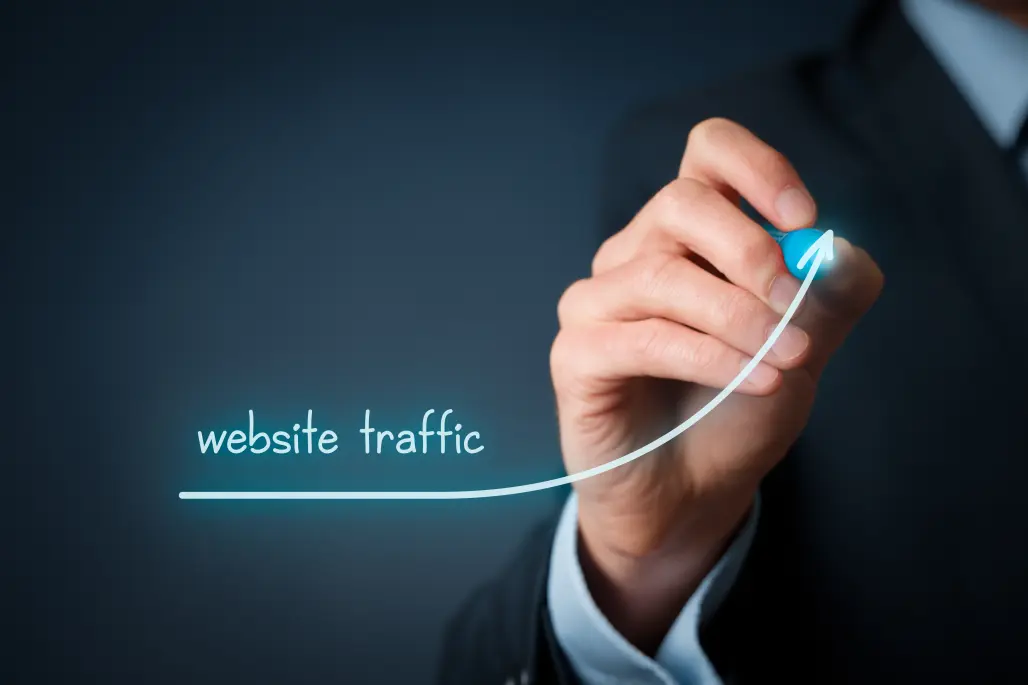Why web accessibility is the #1 way to boost your traffic

There is a reason that 2-for-1 deals are one of the most popular sales promotions in history-- we all like getting more for less! Prioritizing web accessibility is like a 2-for-1 deal for your website traffic. With one set of website optimization tactics, you can take advantage of multiple benefits towards your website performance.
What exactly does web accessibility mean?
Forrester's definition for digital accessibility is “The extent to which customers are able to get value out of a digital experience regardless of variations in their abilities". So, if a user has auditory, cognitive, neurological, physical, speech, or visual disabilities, they’ll still be able to effectively use your website. Accessible websites are beneficial to other users and situations too – but more on that later.
The Web Content Accessibility Guidelines
(WCAG) provide a wide range of recommendations for making web content more accessible and are considered the legal standard for designing accessible websites. The guidelines range from things like adding alternative text attributes to images so visual elements can be interpreted by screen readers, to ensuring sufficient color contrast between text and backgrounds, to improving your site and making it more usable across the board.
We all know addressing accessibility is the right thing to do, but it may be hard to prioritize against other projects or initiatives. So, here are the two main reasons why accessibility is such a large opportunity for marketing teams:
#1 – Access a large, underserved (and growing) audience
What if I told you there is a massive audience that you’re missing out on? Don’t believe it? Consider two statistics: An estimated 1 billion people, or 15% of the world’s population, live with disabilities. At the same time, a
2020 study conducted by WebAIM
, the well-known accessibility non-profit, discovered that over 98% of the world’s top one million websites don’t offer a fully accessible experience to site visitors. That means only 2% of websites are truly capitalizing on the $1.2 trillion in annual spending power of the disabled population.
If your website isn’t accessible – say goodbye to that audience and all that additional website traffic and activity. 71% of disabled people will leave a website immediately if not accessible.
At the same time, the number of people with disabilities is increasing year on year, as medical improvements allow more people to live longer. Aged populations (those over 60) constitute the fastest-growing demographic in developed countries, with their number set to
increase from 310 million in 2017 to 427 million by 2050
.
#2 (The freebie!) – SEO boost
The second half of your 2-for-1 deal for web accessibility is an additional SEO boost. One of our global financial services customers experienced this directly- they used Digital Quality Management (DQM) to improve web accessibility and SEO, resulting in a 36% increase in web traffic over the previous year. For a company that has two million organic search visitors a year, a 30% increase would mean six hundred thousand additional visitors. Based on industry standards that could mean an additional twelve hundred new clients a year.
This SEO boost happens in part because accessible design techniques overlap with those that support technical and on-page SEO. For example, a major aspect of SEO is making websites easier to crawl and become understandable for search engines. Google and other search engines operate in a similar manner to a blind web visitor - where are the elements of this page and how do I understand them? By providing searchers and spiders with a clear understanding of content, it stands to reason that your website will get an algorithmic lift. Paying attention to the following elements, will improve both the accessibility and findability of your web content:
- Video transcription
- Image captioning
- Image alt attributes
- Title tags
- Header tags (H1, H2, etc)
- Link anchor text
- On-site sitemaps, table of contents, and/or breadcrumbs
- Content ordering
- Size and color contrast of text
- Semantic HTML
Accessible design has also been shown to enrich the customer experience and reduce friction by improving overall usability. Consider the following scenarios: a user trying to access a website with older technologies or a slow connection, trying to read website text on a tablet in bright sunlight, trying to browse a website one-handed on a mobile phone, or even watching a video at work or on a train without access to audio! Accessible design will improve the site usability in these scenarios and more, resulting in lower bounce rates, more time on page and increased customer loyalty.
At the end of the day, accessible design means designing websites that are adaptable to different user needs, preferences and situations. So, while you’re unlocking a whole new audience, any changes you make to improve web accessibility help create a better experience for all users AND give you an SEO boost. Win-Win-Win.
Crownpeak Digital Quality Management helps improve the quality of your website, from accessibility, to SEO, broken links, brand and legal compliance, and more. Get a free website scan to discover issues on your site and how to fix them.